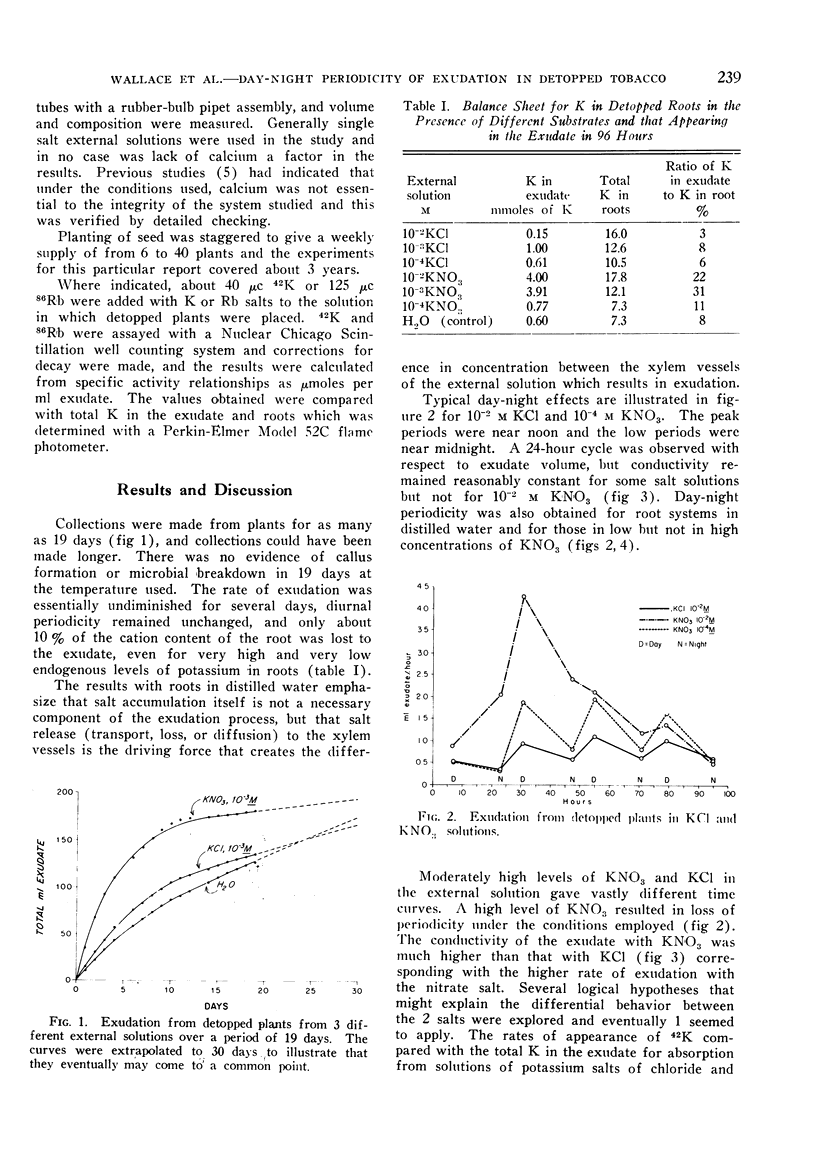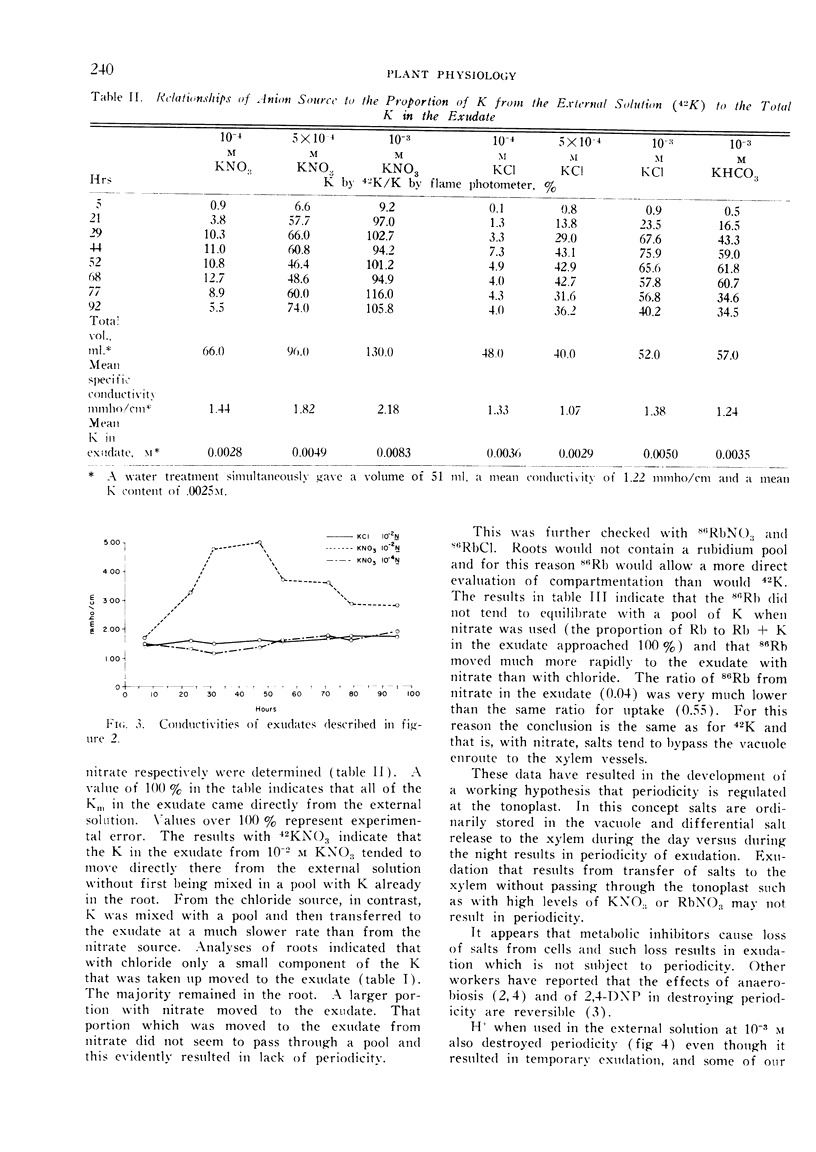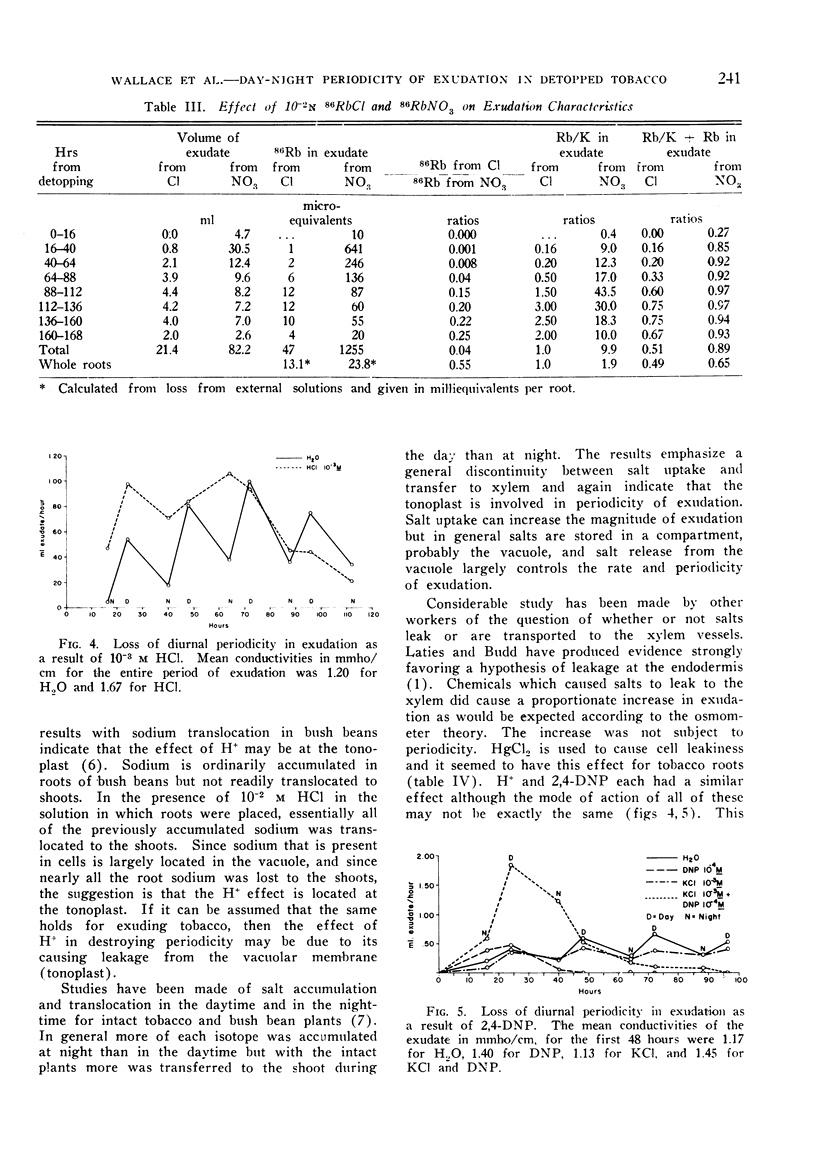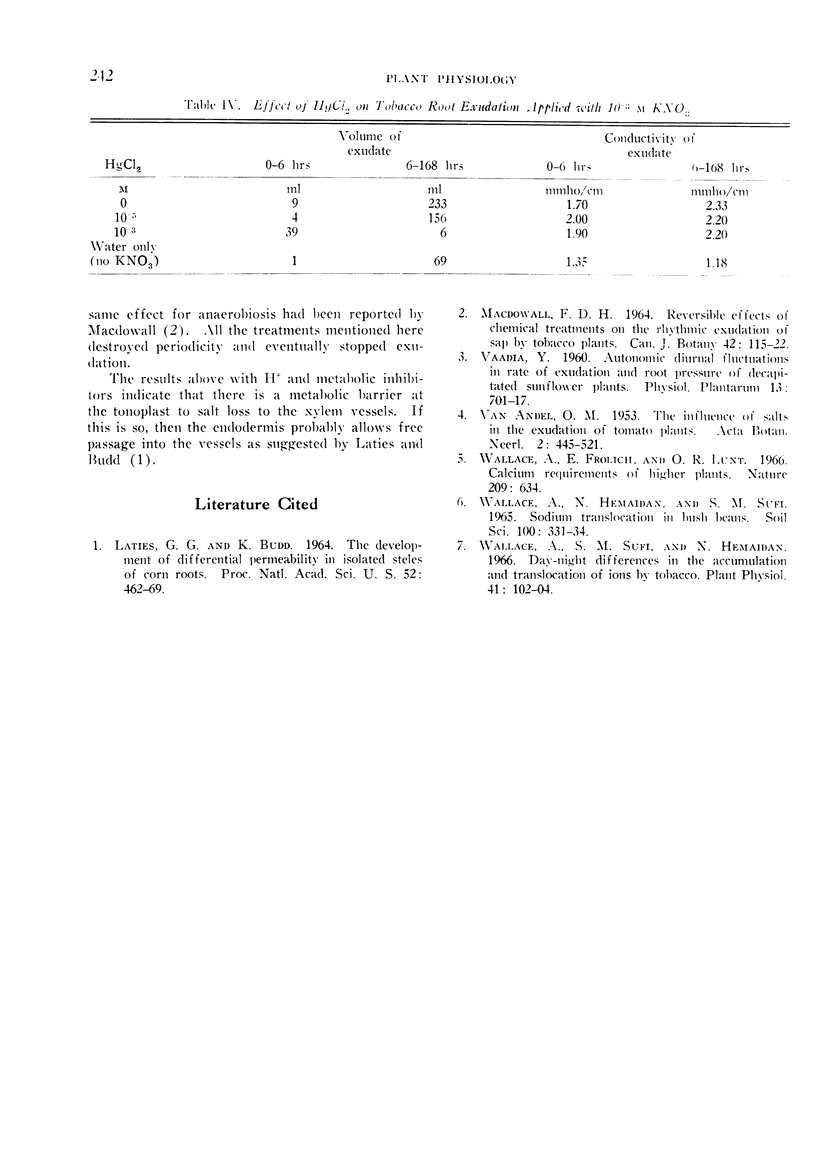Abstract
Exudate was collected periodically from the root systems of detopped tobacco plants. Volume, cations, and 42K or 86Rb transfer were measured. According to measurements of K by 42K and by the flame photometer, when concentrations of KCl and KNO3 were lower than 10−2 m, the K in the exudate came mostly from a pool in the plant rather than from the external solution. With higher external KNO3 solutions, within a few hours nearly all of the K in the exudate came directly from the external solutions. Studies with 86Rb lead to the same conclusion. In contrast the maximum proportion of K in the exudate that came from KCl in the external solution was reached usually in many hours after detopping and amounted to from 50 to 75%. The higher the external concentration the faster it was reached. These data for KCl are indicative of the 42K passing through a K pool in the root cells. K and Rb from high concentrations of KNO3 and RbNO3, however, may not pass through such a pool. The addition of 10−2 m KNO3 into the external solution during exudation essentially eliminated the effect of periodicity at least for a period of time and under the conditions of the experiments. Hydrochloric acid, mercuric chloride, anaerobiosis, and 2,4-dinitrophenol had the same effect and each resulted in a massive final exudation that usually persisted for 1 to 3 days before stopping. These results all lead to a hypothesis that periodicity is regulated at the tonoplast.
Full text
PDF




Selected References
These references are in PubMed. This may not be the complete list of references from this article.
- Laties G. G., Budd K. THE DEVELOPMENT OF DIFFERENTIAL PERMEABILITY IN ISOLATED STELES OF CORN ROOTS. Proc Natl Acad Sci U S A. 1964 Aug;52(2):462–469. doi: 10.1073/pnas.52.2.462. [DOI] [PMC free article] [PubMed] [Google Scholar]


